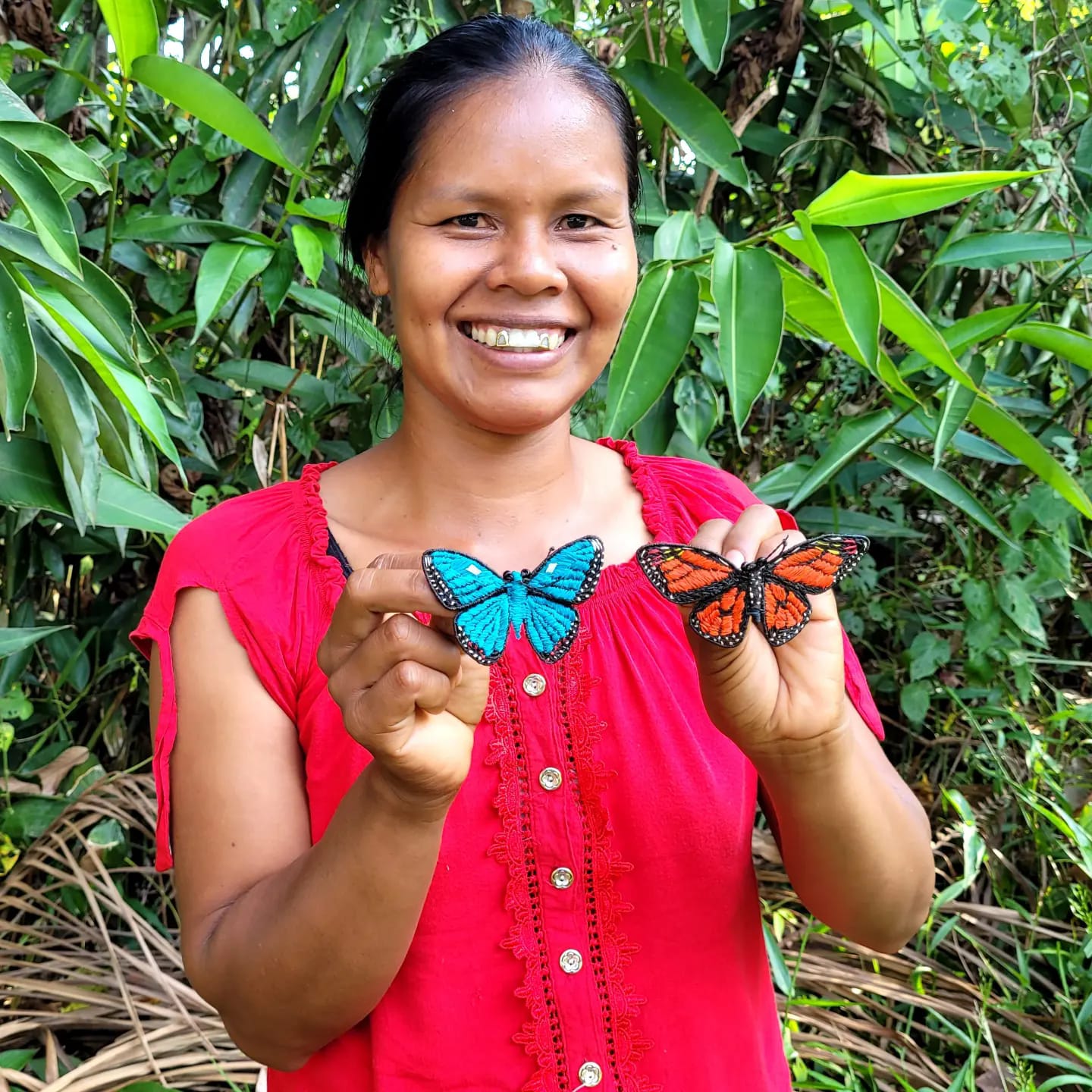by Campbell Plowden
October 3, 2022
The workshop we had planned to hold in Brillo Nuevo was supposed to an Artisan Facilitator Training. The goal was to bring together experienced artisans from the Ampiyacu to learn how to lead basic level artisan workshops and guide artisans from their groups to make new crafts. By the time we arrived on Sunday night, we knew things were going to be very different.

Many artisans we had hoped would participate were not available. Several were deeply involved in campaigns in the upcoming regional elections. Several were daughters of Don Manuel who had just passed away. One artisan leader went to Iquitos to register her association. Others needed to go to the city to renew national ID cards for themselves and their children. Several artisans from other communities didn’t want to push their boats up the river in the low water. One woman who had learned to make woven butterflies with us now had new clients who were less demanding.

Since we had invested significant resources to organize this workshop, it was discouraging to gather on Monday morning with only seven participants. While a few of them were experienced, most had never made a woven animal before. In practical terms, this gathering had shifted from a facilitator training to a blend of a general and guided workshop where Pablo would direct one group to make two kinds of birds and Doilith would work with others to make two kinds of butterflies.

The close attention that Pablo and Doilith devoted to the members of their groups allowed them to make good progress on the first day. Maria and her husband Misael added extra energy and experience to the group when they joined us on Tuesday. By the end of the second day, I was happy to see that Doilith’s young students had made solid progress weaving their first monarch butterflies.

Pablo’s group was making quality ornaments of the complicated blue-crowned mot mot. They all used his sample bird as a reference, so I was impressed he was able to guide his students to incorporate a few changes to the bird’s color and shape we had discussed the day before.





